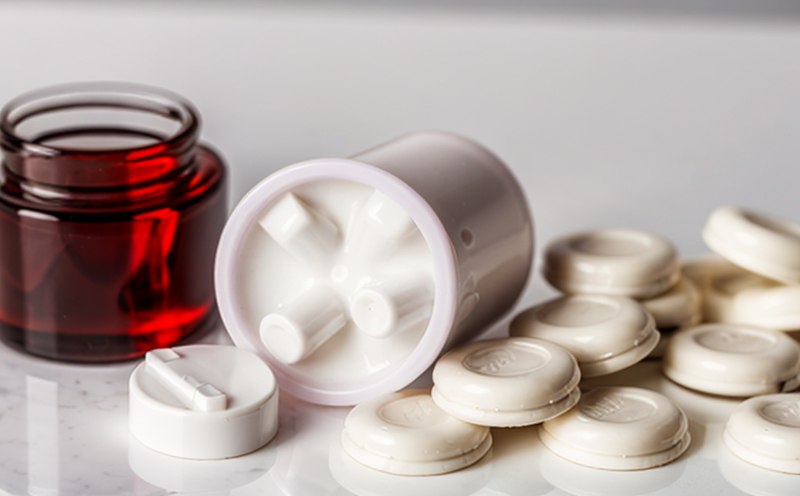Microbial Limits Pharmaceutical Products Test
The Microbial Limits Test is a critical procedure in pharmaceutical testing that ensures the safety and quality of oral solid dosage forms. This test evaluates the presence of microorganisms such as bacteria, yeasts, and molds within specified limits to prevent contamination and ensure patient safety. The test is conducted according to international standards like ISO 14644-1 and USP Microbiological Examination of Nonsterile Products.
The testing process involves several steps: first, the sample is prepared by diluting it in a buffered peptone water (BPW) solution. Then, the diluted samples are incubated under controlled conditions to allow microorganisms to grow if present. After incubation, the growth is observed and counted using colony-forming units (CFUs).
The results of this test are crucial for pharmaceutical companies as they ensure compliance with regulatory requirements. Non-compliance can lead to recalls, reputational damage, and legal issues. The Microbial Limits Test is an integral part of quality assurance and helps maintain the integrity of the product throughout its lifecycle.
Understanding the microbial limits in pharmaceutical products is essential for ensuring that these products are safe for use. This test not only protects patients but also enhances the reputation of the manufacturer, fostering trust among consumers.
The Microbial Limits Test is a non-sterile examination and applies to various types of oral solid dosage forms such as tablets, capsules, and powders. It helps in identifying potential sources of contamination early on, allowing for corrective actions to be taken promptly.
By adhering to strict protocols and using advanced laboratory equipment, this test ensures accurate results that can be relied upon by regulatory bodies and pharmaceutical companies alike. The precision and reliability of the Microbial Limits Test make it a cornerstone in the quality control process of any pharmaceutical company.
Benefits
- Patient Safety: Ensures that the product is free from harmful microorganisms, thereby protecting public health.
- Compliance: Meets regulatory requirements set by international standards like ISO and USP.
- Quality Assurance: Enhances the overall quality of the pharmaceutical product through rigorous testing.
- Reputation: Maintains a positive reputation for the brand, ensuring consumer trust and loyalty.
- The Microbial Limits Test minimizes the risk of contamination, which can lead to product recalls or withdrawals.
- This test contributes significantly to maintaining high standards of production and quality control within a pharmaceutical company.
- By conducting this test, companies demonstrate their commitment to regulatory compliance and patient safety.
Why Choose This Test
- Regulatory Compliance: Ensures adherence to international standards such as ISO 14644-1 and USP Microbiological Examination of Nonsterile Products.
- Patient Safety: Provides peace of mind that the product is safe for consumption.
- Quality Assurance: Offers a robust quality control process to maintain high standards in production.
- Brand Reputation: Enhances brand reputation by demonstrating commitment to patient safety and regulatory compliance.
- The Microbial Limits Test is crucial for ensuring that the product meets stringent quality control criteria, thereby enhancing consumer confidence in the brand.
- This test helps pharmaceutical companies avoid potential legal issues and product recalls by identifying and addressing contamination risks early on.
- The test ensures that all batches of oral solid dosage forms meet the required microbial limits, thus maintaining consistent product quality.
Competitive Advantage and Market Impact
- Enhanced Reputation: Companies that adhere to strict testing protocols like Microbial Limits Test gain a competitive edge by establishing themselves as leaders in quality and safety.
- Informed Decision-Making: The test provides valuable insights into potential contamination risks, allowing for proactive measures to be taken before they become significant issues.
- The Microbial Limits Test helps pharmaceutical companies maintain consistent product quality across different batches and production runs, which is crucial in a highly competitive market environment.
- This test ensures that products meet stringent regulatory requirements, thereby reducing the risk of recalls and withdrawals, which can significantly impact brand reputation and financial stability.
The Microbial Limits Test plays a pivotal role in maintaining high standards of production and quality control within pharmaceutical companies. By adhering to strict protocols and using advanced laboratory equipment, this test ensures accurate results that can be relied upon by regulatory bodies and pharmaceutical companies alike. The precision and reliability of the Microbial Limits Test make it a cornerstone in the quality control process of any pharmaceutical company.





